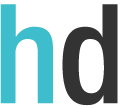In medicine, we know that stress uncovers problems that may have existed all along.
Take, for example, patients with occasional chest pains and shortness of breath. They may be sent for stress tests to see how well their hearts work during physical activity. The test involves monitoring the patient’s breathing, blood pressure and heart rhythm, and can reveal problems such as poor blood flow or irregular heartbeats. The test is short but effective in unveiling problems otherwise unnoticed.
Similarly, COVID-19 has been a stress test bringing to light long-standing structural inequities. Specifically, the pandemic has amplified economic barriers to medical school admissions. This July, McMaster University published a study that found applicants whose families were in the top 25 per cent of earners in Canada were approximately twice as likely to be offered admission than students whose families were in the lowest-paid 25 per cent. This is unsurprising considering socioeconomic privilege in Canadian medical school admissions was originally documented almost 20 years ago. Not much has changed.
The COVID-19 pandemic has highlighted the financial fragility of the average Canadian and medical school applicants are no exception. Prior to the pandemic, prospective applicants paid hundreds to thousands of dollars to attend medical school interviews without any guarantee of admission. Now, innovations such as videoconferencing of medical school interviews and expansion of the fee assistance program by the Association of American Medical Colleges (AAMC) have enabled more students to have a fair shot at becoming a doctor. The U.S. program is much broader than its Canadian counterpart, which only helps with the Medical College Admissions Test (MCAT) and does not support applicants during the application process.
For many, MCAT preparatory courses are no longer an option as the scarcity of employment opportunities makes it difficult to pay for these courses. This is compounded by the fact that many of these prospective applicants come from homes with parents who are low-paid essential workers or recently became unemployed.
“I’m constantly worried about my mom’s health. She’s an essential worker so she’s exposed to people every day,” says Manpreet, an aspiring medical student and University of Toronto Community of Support member (names have been changed to protect students’ privacy). “Her workplace has not been diligent with providing (personal protective equipment), which worries me a lot as she’s over 60. I’ve tried to just not think about it since it distracts me from my applications.”
Madinah, a prospective medical student, reports, “I have been relying on my small amount of savings to cover the cost of things such as the MCAT, CASPer and a few medical school applications. However, it might not be sufficient to pay for all of them and I will have to find a job somehow.”
Mark, another aspiring medical student, says, “Coming from a single-parent home and being the oldest child, I have to put housing and food costs before the costs of my application. Now with COVID-19, I am struggling to help cover the costs of my family’s living, which is causing the funds for my medical school application to greatly diminish. This has me very worried because I have no choice but to find the money to cover my application costs within the next few months.”
Costs associated with the traditional application process are exorbitant. “In terms of Canadian schools, I have 14 of the 17 listed that I would like to apply to – which would amount to a bit over $2,400,” Precious, a hopeful applicant, says. Application fees to a medical school can range up to $150. “All in all, the entire application process would be close to $8,000 excluding the potential cost of interviews.”
Medical school faculties urgently need to develop a national strategy to address financial barriers, including waiving application fees for low-income applicants, similar to the AAMC fee assistance program in the U.S. Medical schools need to expand free MCAT preparatory courses run by medical school pathway programs like the UofT Community of Support that is committed to equity and diversity and recognizes the importance of a healthcare community that reflects Canadian. The program provides free application support, essay reviews and mock interviews.
Faculties must be more transparent by publicly reporting the summary statistics of different application components (e.g., average GPAs, MCAT scores, etc.) and how these components are weighted in an applicant’s final score. This information can empower prospective applicants from low-income backgrounds to make informed decisions regarding where to spend their limited financial resources.
A medical test is only useful if it guides your practice. When this pandemic resolves, it is important that we act on the results of our COVID-19 stress test. For some, the symptoms of poverty were always problematic and barely manageable day-to-day. For others, COVID-19 revealed underlying systemic issues. Nonetheless, this stress test eventually will be over and for some the symptoms will be a fading thought. Community organizers and activists will play a vital role in advocating for the most vulnerable members of our society. Medical school faculties must be leaders in encouraging innovative and forward-thinking solutions to eliminate financial barriers and foster diversity.
Price of a Dream (PoD) is a team of medical students, residents and staff across Canada passionate about eliminating individual and systemic financial barriers for medical school applicants from low socio-economic backgrounds.


The comments section is closed.